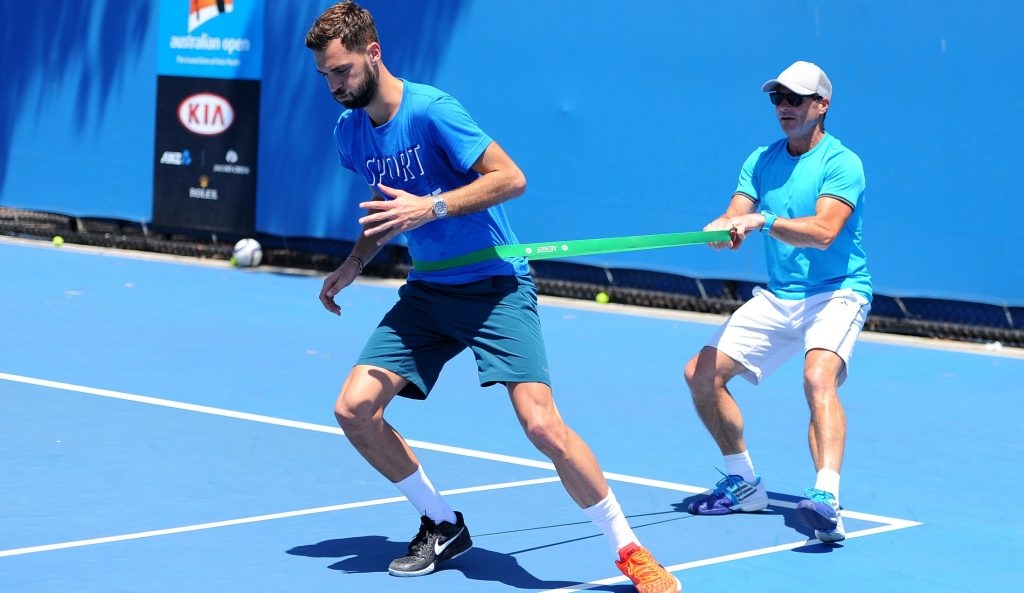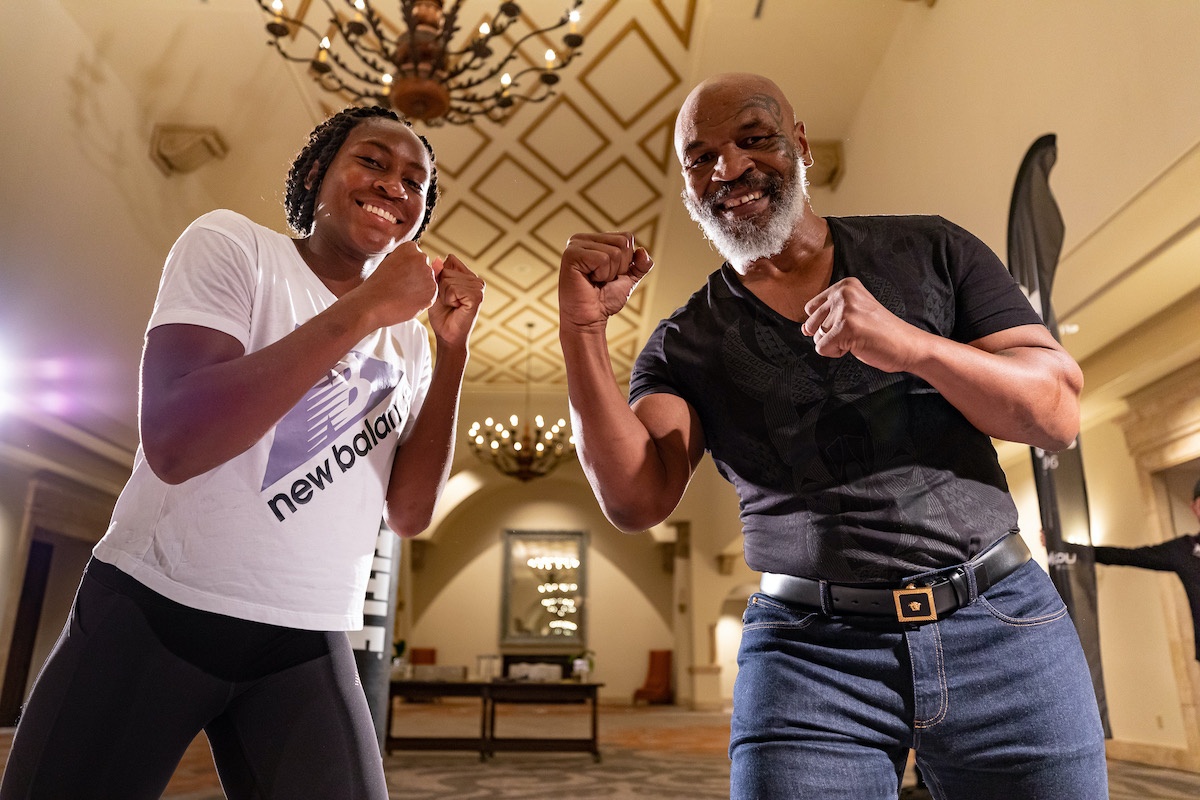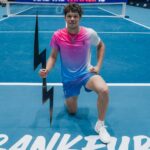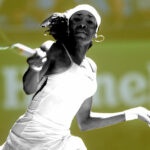No pain, no gain they say…
All the players you see starting 2020 are coming out of several weeks of demanding training. That infamous offseason is not something to be messed with, for short term and long-term goals.
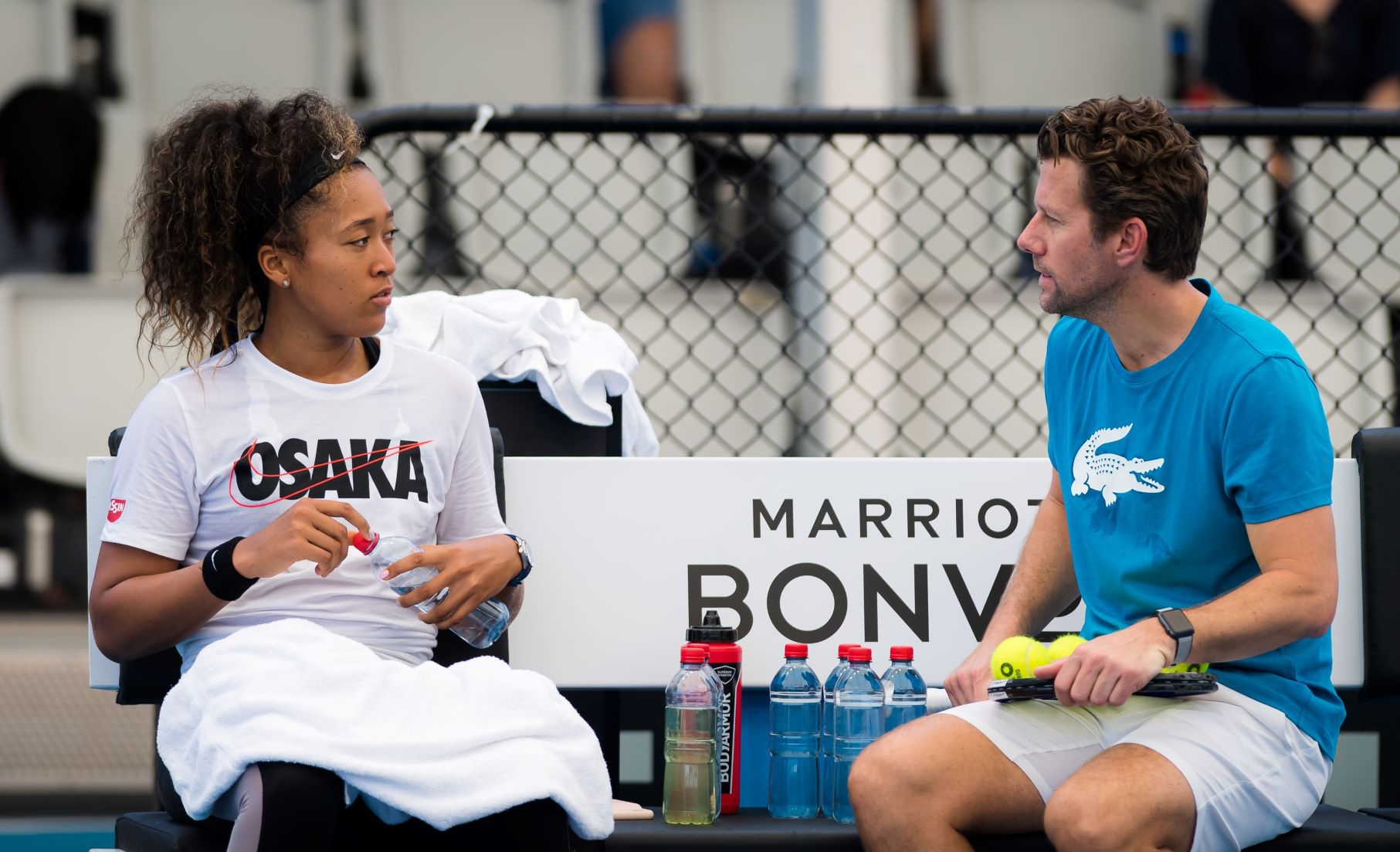
November and December come in tennis, you start to see players posting all those nice pictures of them lying on beaches for some well-deserved vacation time after exhausting seasons. But this paradise will only last for two or three weeks maximum before they’re all back to business, and they’d better have enjoyed their holidays because what’s coming before the start of a season is no joke. It’s actually in this offseason that some are already winning or losing the first big tournaments of the year so we’ve been asking around some top physical trainers and coaches what a successful offseason means for them and the players. After all, it’s a rare chance to have several weeks in a row free of tournaments to improve fitness and game.
Winter’s plans are going to vary from teams to teams, but Laurent Laffite, the former fitness trainer of Garbiñe Muguruza and the current one of Anastasia Pavlyuchenkova, sees three mandatory blocks to go through for any player in the pre-season.
“There are many methods that are determined by the particularities of the player, but we all try to go through at least three momentums inside the physical preparation: to reduce the risks of injuries as much as possible, to develop the physical performances, and to recover from a training period which is intense and tiring for the athlete. In this frame, you see what the strategies are regarding what the priorities are and so also the amount of time dedicated to each topic. Recovery is work because if you fail here, you can miss the goal.”
“When you have six weeks ahead of you, it’s becoming meaningful for physical preparation”
Not all players will have the same amount of weeks to get ready: some will have up to six to eight weeks if they finished their season early, some will have only three or four weeks if they’ve played until the end of November.
“When you have six weeks ahead of you, it’s becoming meaningful for physical preparation. Under it, it’s an illusion to think you’re going to improve of 10 or 15%: in three or four weeks, you can’t put a revolution on anything even if there will be little improvements that are needed for the player’s evolution. It’s a time that needs to be thought of thoroughly because each priority given doesn’t require the same amount of time to be dealt with.”
Adding obviously that the plan won’t be the same for a player who needs to spend lots of time on the court, one who needs more physical work, a young and upcoming player or an experienced one over 30 years old.
When they’re all at work, the main priorities are similar: they all need to have plans to prevent injuries, they all need to get in shape and they all need to work on their game. The success of those plans will depend on how. And the how starts by the where: some players decide to go early under the sun (Florida, California, Dubai, super early to Australia) to get used to what’s waiting for them in Australia to start the year. Others in Europe choose to stay indoors and closer to home longer, something they can now do more easily because of the use of heat chambers. The main thing is to make sure they’re not too comfortable for their own good.
“If you do everything indoor and in good conditions, you’re getting a bit too comfortable and happy. Then when you’ll be out in the wind and the heat… You also need to prepare in tough conditions to strengthen the mind. Training is here for that too. At the same time, if you’re training too much in the heat, it can be counterproductive as heat is tiring so players could arrive already a bit burnt out at the Australian Open. Nowadays players are in Australia like two weeks before the start so it’s time enough”, explains Quétin.
Once it’s all settled, a big part of that preseason workout will be dedicated to injury prevention. Here is the time to make sure the players’ bodies have recovered from the season that has just finished and to prepare them to resist through the first part of the year that’s soon going to start.
“The priority is always to be in the best physical state at the beginning of the season. The preseason is the right time to work on some problematic zones in the body and start the season without any worries,” said Wim Fissette, former Victoria Azarenka coach who is now working with Naomi Osaka.
“The key is to condition the athlete to perform but also help reduce the risk of injury, a concept that goes hand in hand”, explains Harry Routledge, PhD head of sports science and nutrition at the Los Angeles FC who works with Simona Halep.
“The key pillars are ensuring that the athlete is physically prepared to not only play matches but also conditioned to complete Grand Slam tournaments. With that, the main focuses are around preparing the athlete from a cardiovascular aspect, but also from a strength and power standpoint. So as well as court session and aerobic conditioning sessions there will be gym work involving strength and power as well as single limb strength and power work.”
Pieces of technology
And so a big part of that winter training is related to endurance: tennis players need to be quick on their feet but they also need to last hours on those courts for matches or practices. And this is worked on during the offseason, as explained by Paul Quétin, French national fitness trainer of Fed Cup and Davis Cup teams.
“Endurance is one of the main parts of the physical training, as it’s what allows players to train for five or six hours per day. It’s the motor that makes them recover, help them to do session after session and to do it well. It’s mandatory, yet the forms it can take may vary: on court, on a track, running, biking… back in the day, we could go cross country skiing but nowadays players have less time. We can also work in hypoxic chambers.”
Technology and the progress of medical sciences have also helped the players and their teams to fine-tune their preparation. They’re not working in the dark nor out of subjective feelings: the data don’t lie. Routledge here gives some examples:
“As the pre-season will involve aspects of aerobic conditioning, anaerobic conditioning with repeat high-intensity efforts to be able to get around the court at speed and with technical work (footwork, racket work, game style), technology can help through the use of, for example, heart rate monitoring. This will allow coaches to see how the player is responding to the given session but also allow them to see an improvement in fitness over time. Another piece of technology that is also being used is the GPS analysis, this is allowing sports scientists and conditioning coaches to quantify ‘hard’ and ‘easy’ sessions, alongside monitoring aspects of performance such as max speed across the court but also the load through the athletes during hard changes of direction.”
Quétin adds that they also use the progress of sports science to make sure the players don’t overtrain during those weeks of training.
”Heart tests at wake up time can say if the player is overtrained or not. Players also do regular blood tests so we can detect deficiencies and check blood markers that relate to overtraining.”
All of this helps to avoid the biggest danger of that big training block: doing too much and so seeing the players getting injured or knackered instead of at their utmost best when crunch time is going to come in Melbourne.
“Overtraining happens when the communication is not good enough in the team”, says Fissette. “First of all the combination train-rest is a very important factor: you can only keep training hard for several weeks if you also take your necessary rest. Players also should communicate if they feel the plan should be adjusted. A few days of bad sleep, maybe some sickness: those are signs.”
“So they push and push through their limits…”
Paul Quétin agrees and points at the difficulty of finding the right balance:
“They can go for too much. They want to train, to improve and think they need to work very hard to keep up with their rivals, so they push and push through their limits. And that’s also how you get better, but it’s not easy to know if it’s too much. We need to see what’s normal fatigue and so is needed, and what’s the red zone. Sleep quality is a good sign indeed: a player who can’t sleep despite training five hours a day. There’s also a part of subjectivity with a player who feels tired. But then the tough task of our job is also to avoid listening too much to this as we’re also here to push the players. It’s a tough balance to find.”
Fissette sees another thing to avoid in pre-season: training without goals:
“Starting without a vision should be avoided: the player and the team should be on the same line from the start about what the goals are for the pre-season so that’s clear for everyone.”
It’s sometimes said that you can endanger a whole season by messing up your winter preparation, but for the professional talked to here it’s mainly a cliché. Yes, a player will struggle if the offseason is a fail for whatever reason (often, injuries), but there’s enough time through the year to catch up.
“A good pre-season phase will allow for longevity going into the season, but that being said conditioning work is still required during the season to maintain fitness levels so it’s hard to make such a suggestion that a bad pre-season will endanger a whole season. That is not necessarily the case”, explains Routledge.
Fissette thinks it’s possible to make up for a bad winter if the players are willing to do it:
“It’s always difficult to start the year without being 100% physically, but players don’t like to skip tournaments. They feel they are missing points and probably also money. This is short term thinking: it’s very important to skip a few tournaments if you haven’t had a good preseason. It’s much better to skip tournaments and work towards your best level, to train and play again to win tournaments when you feel ready.”
A good offseason is always an advantage, but it’s never a guarantee
For Laurent Laffite, offseason is no revolution making, just a chance to get more time to work.
“I don’t treat it as a crucial time, just as a moment where everything can be tied to training and not to tournaments. It’s a chance to get deeper in the areas where we’re trying to improve.”
A good offseason is always an advantage, but it’s never a guarantee.
It can’t especially be when some brutal weather conditions are waiting for you for the first Grand Slam of the year. There are no ways to prepare for heatwaves and humidity, but there are ways to make players cope the best they can once under it. This preparation won’t be done through the winter training block, unless for those who want to try heat chambers or work in altitude:
“Players play about 20-25 tournaments a year, they have to adjust every week”, reminds Fissette. “So of course get to Australia early enough to adjust but I don’t see any need for special preparation for the heat.”
However, once in Australia, processes will be put in place, as details Routledge.
“Players need to prepare a hydration and nutritional fuelling strategy that will allow for the conditions. They should try and train at the times when the matches will be to best prepare. The best way is to try and practice in the heat for a substantial amount of time before the tournament. This will allow the athlete to begin to acclimatize as best as possible to the heat.”
And the athlete needs to, because heat is a menace for the performance, as explains Laffite.
“You need to find how to cool down, how to fight against dehydration and loss of mineral salts created by sweating. Fitness training is going to go down a bit in its demands before going up again little by little. You also need a nutrition plan to avoid letdowns. Also, you need to make sure the athlete gets out in the heat more and more each day, and that he or she isn’t trying to avoid it.”
When players arrive at the first Grand Slam of the year, they have been working extremely hard for weeks and are ready to see the benefits of all this pain. And if they’ve been able to go through this, it’s also because their teams have made sure to regularly break the routine.
“Pre-season is indeed physically very tough, but you know why you are doing this”, says Wim Fissette. “You should visualize yourself in a big final: champions have this internal motivation and they are happy to have a pre-season because they want to become the fittest ever and they want to improve their game. On the other hand, it’s important to keep it fun. You can work very well and still have fun by being creative and add some different workouts, different locations. A run at the beach is more fun than running on the treadmill.”
Laffite explains that it’s a whole strategy to make sure the players don’t get restless and annoyed by all the offseason training.
“We often set up other activities, like boxing for example, or outdoor activities, to prevent the training from becoming repetitive and tedious. Players are used to short term goals with tournaments so sometimes all those weeks without competition can be upsetting and the goals too far away. So being creative about it is good.”
Winter training is a serious affair in tennis. Something that is never done on the fly but meticulously. At the end of the day, the Aussie heat might even be the least of those players’ issues because they’ve endured way more every day during weeks of that training block. This is also the trick as many players and coaches say that practice always should be the harder thing so that when players step up on court during tournaments they find the matches being easy and can pass all the needed gears to get the win. Matches are the reward for all those tough weeks, they’re the prize players have been setting their eyes on the whole time. So in January, it’s high time to get the lions out of the cages.
—- —– —– —–
Wim Fissette example of the organization of a five-week training session :
- Week 1: 100% physical: work on the base
- Week 2: 80% physical, 20% tennis: work on the base and start slowly with some easy tennis sessions
- Week 3: 60/40 work more specific physically and tennis work very specific on key areas
- Week 4: 50/50 specific physical work and tennis
- Week 5: 30/70 slow down on the physical work, just more speed and agility and tennis very open and match specific.
- Read more: How Coco Gauff prepared for the season, by Bastien Fachan
- Read more:How Serena Williams for the season, by Bastien Fachan
